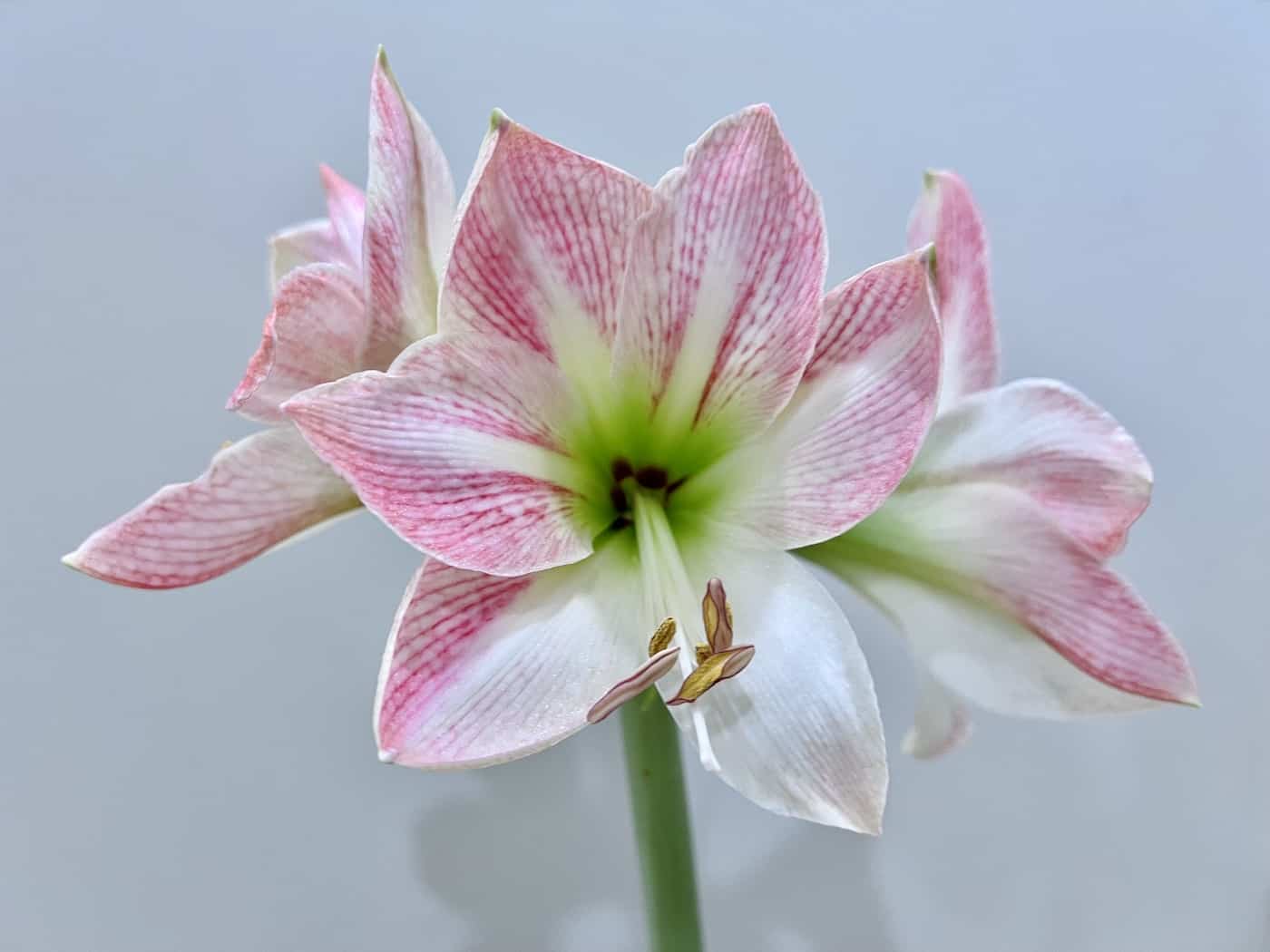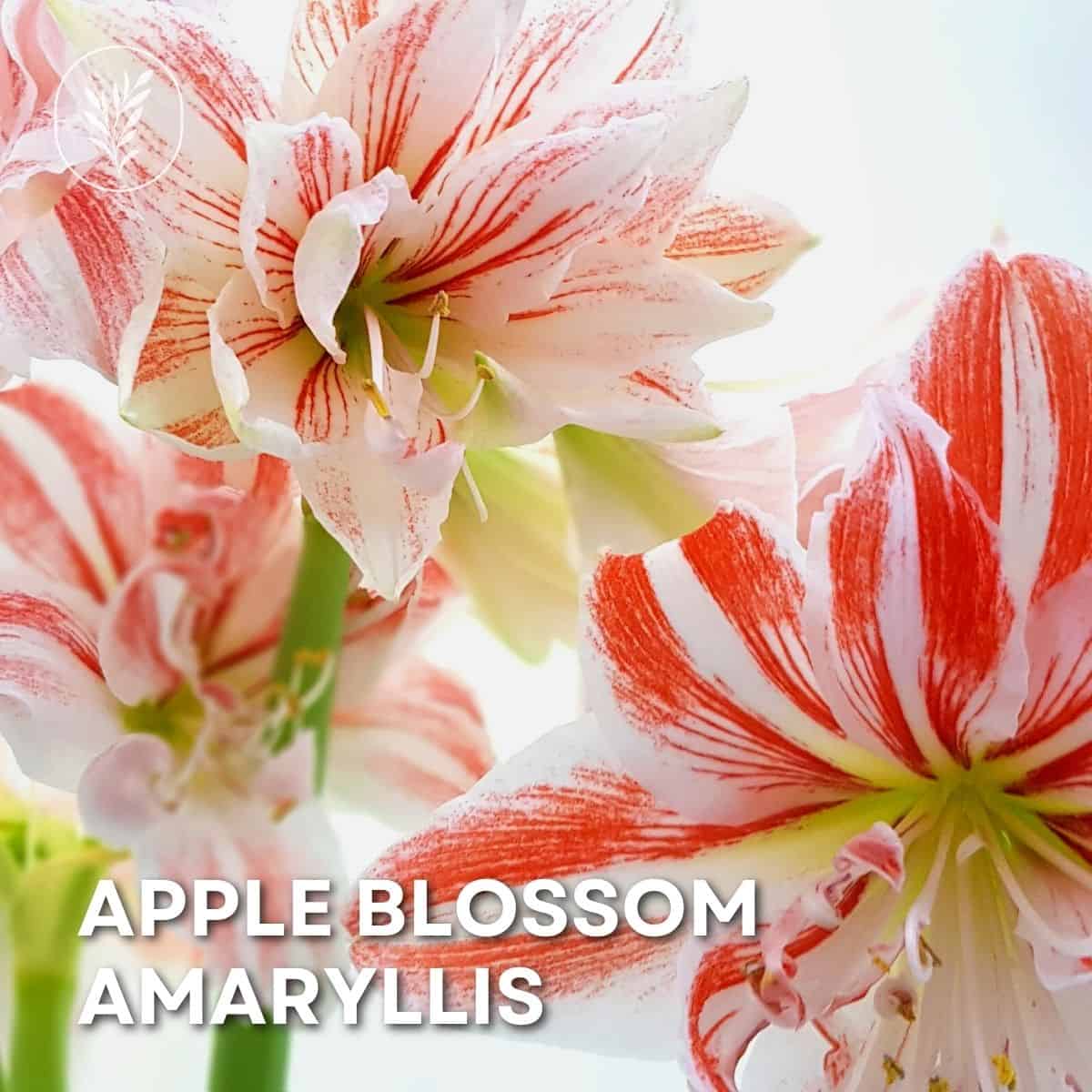Are you looking for a beautiful and vibrant addition to your home that will bring joy throughout the year? Look no further than Apple Blossom amaryllis. These stunning flowers are sure to be an eye-catching centerpiece in any room, with their deep red petals surrounded by white stripes.
Whether planting or caring for them, enjoying their blooms, or finding ways to use them after they bloom, we have all the information you need about these gorgeous plants.

Introduction to the Apple Blossom amaryllis
The Apple Blossom amaryllis is a stunningly beautiful flower that will add a splash of color to any home or garden. It has large, bright pink and white petals with cream-yellow centers that are sure to draw attention. The plant itself is easy to care for and requires minimal maintenance, making it perfect for busy homeowners who want to enjoy the beauty of nature without having to be an expert gardener.
When planting your Apple Blossom amaryllis, make sure you choose a sunny spot (whether you’re growing it in a pot indoors or in the garden outdoors). Dig a hole twice as wide as the pot your bulb came in and fill it with compost-enriched soil before placing the bulb inside so its roots can spread out easily. Cover the bulb with more soil and water thoroughly until moist but not soggy.
Once planted, caring for your Apple Blossom amaryllis is relatively simple. Water regularly during active growth periods but allow the soil to dry out between watering sessions so as not to overwater them (as this could lead to root rot which can kill plants quickly). Fertilize once every two weeks during this time using an all-purpose fertilizer at half strength according to package instructions; this will help promote healthy blooms throughout their growing season. Lastly, remove dead flowers promptly after they’ve wilted away.
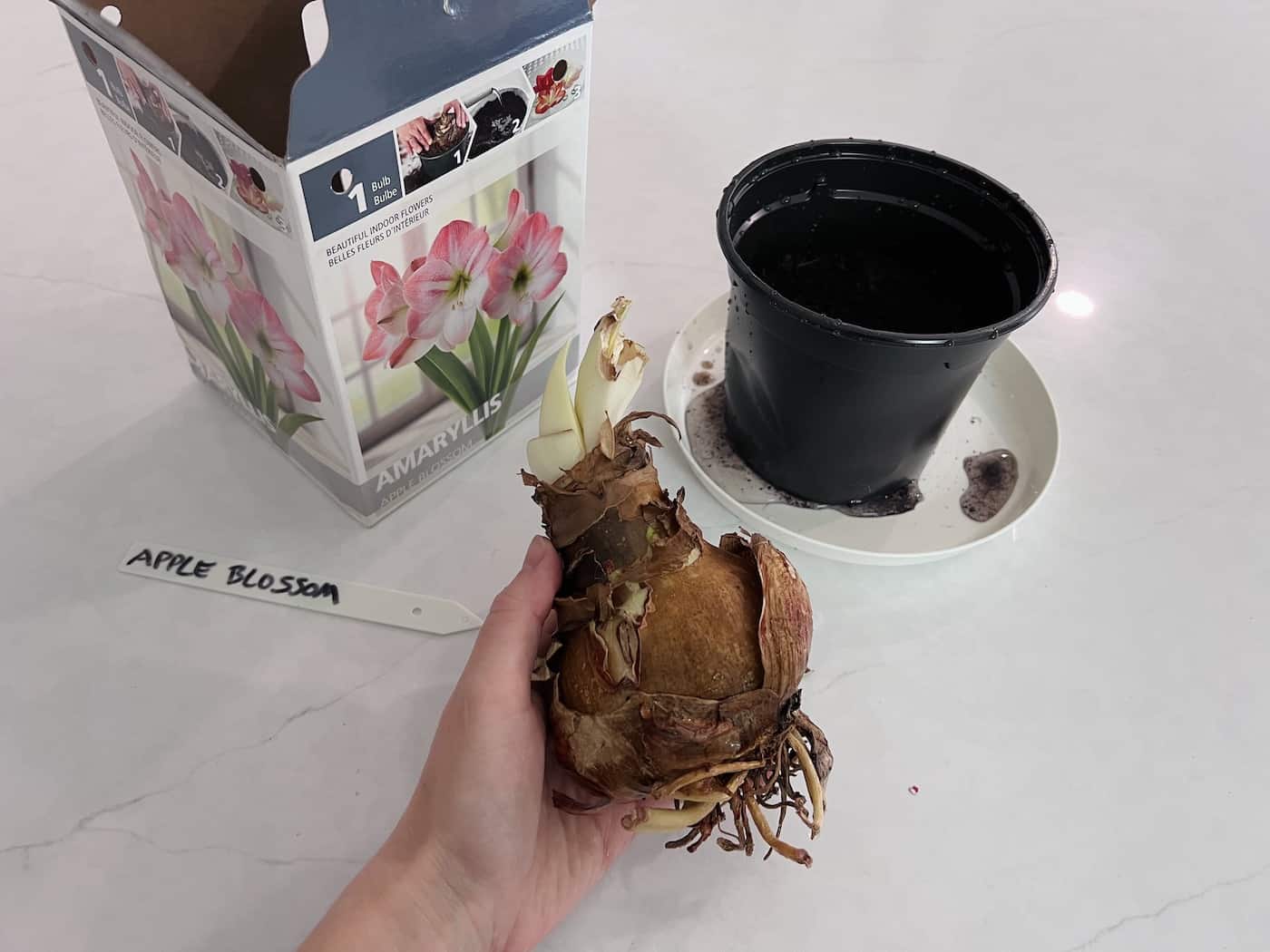
Planting Apple Blossom amaryllis
When planting Apple Blossom amaryllis, it is important to choose the right soil. The best type of soil for these bulbs is a well-draining potting mix that contains peat moss and perlite or vermiculite. If you’re planting it outdoors in a warmer climate, look for well-drained soil (not heavy clay). This will help ensure that the bulb has enough moisture without becoming waterlogged.
The next step in planting an Apple Blossom amaryllis outdoors is to dig a hole about three times as deep as the height of the bulb. For indoor bulbs, the hole should be about 2/3 as deep as the bulb, so that the top of the bulb is exposed. A 6-8 inch pot usually works just fine for a single bulb.
Place the bulb in the hole with its pointed end facing up and cover it with soil. Make sure not to pack down too tightly, as this can prevent adequate drainage and airflow around the roots of your plant.
Water your newly planted Apple Blossom amaryllis thoroughly but do not overwater; allow at least one inch of soil to dry out between watering sessions so that excess water can drain away from your plant’s roots. Once established, you should only need to water when the top two inches of soil are dry to keep your plant healthy and thriving.
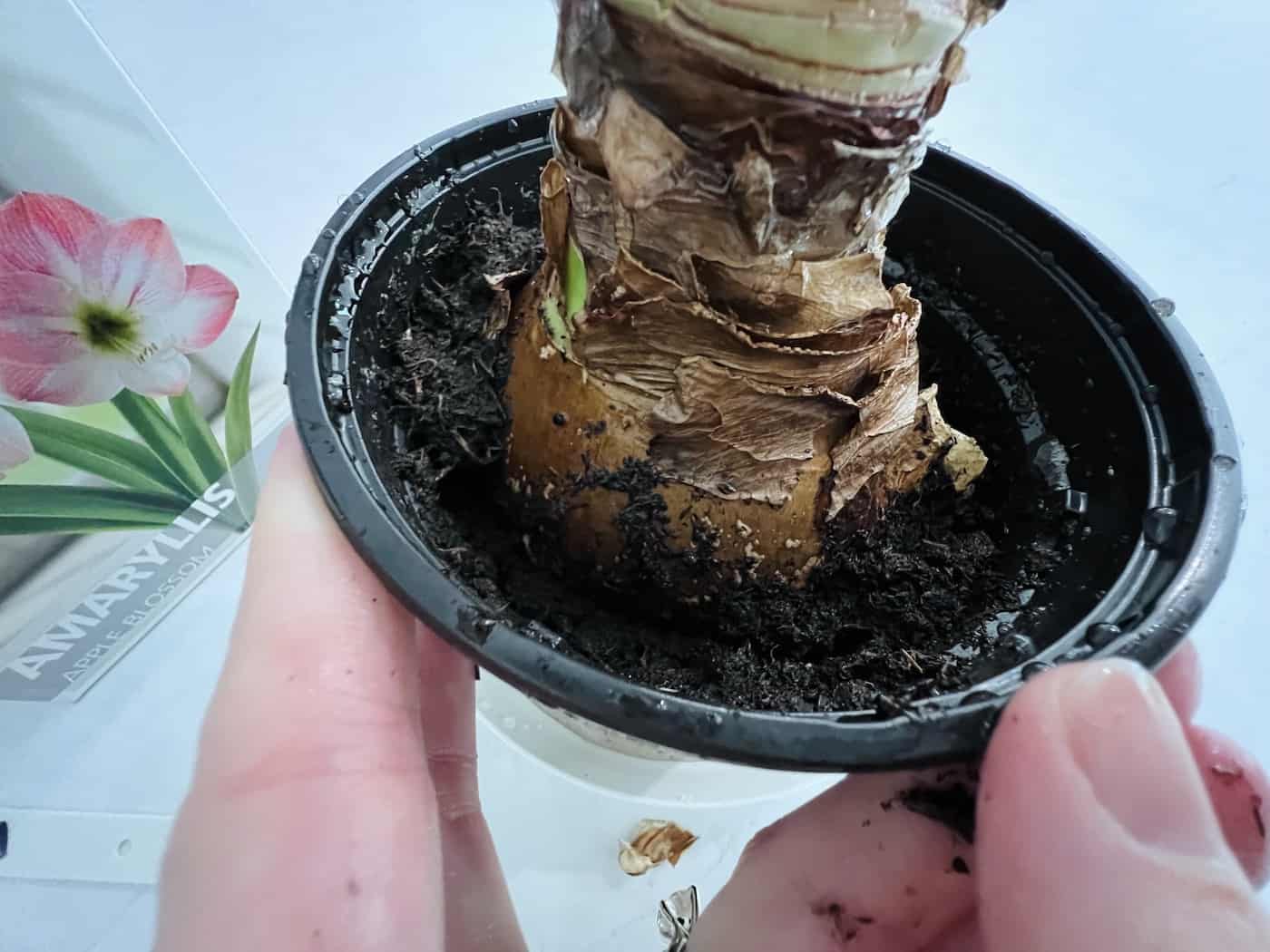
Caring for Apple Blossom amaryllis
Caring for Apple Blossom Amaryllis is easy and rewarding. Here are some tips to help you get the most out of your plant:
Sunlight
Apple Blossom amaryllis needs plenty of sunlight, so make sure they’re in a sunny spot. If you don’t have enough natural light, consider investing in grow lights or artificial lighting. There are quite a few nice plant lights available these days, so you’re not stuck with the blue-red LEDs of years past.
Fertilizing
Fertilize your amaryllis every two weeks (while its actively growing) with a balanced fertilizer that contains nitrogen, phosphorus, and potassium. This will ensure that it has all the nutrients it needs to thrive. Just remember, more fertilizer is not better!
Watering
Water your apple blossom amaryllis regularly but not too much – about once per week should be sufficient. Make sure the soil is moist but not soggy; if it feels dry to the touch, then give it more water.
Pruning
Prune any dead or dying leaves as soon as possible to keep your plant healthy and looking its best. You can also prune off any flowers that have already bloomed so new ones can take their place. Cut the whole flower stalk off.
Temperature & humidity
Keep an eye on temperature and humidity levels around your apple blossom amaryllis – too much heat or humidity can cause problems like root rot or leaf burn. Try to maintain temperatures between 65-75°F (18-24°C) with moderate humidity levels (around 40% or 50% if you can).
If you want all the flowers to bloom simultaneously (like for photos or a flower show), then you’ll likely want to increase the temperature. Keep the bulb at a warm temperature of 80°-85°F (27°-29°C) using a seedling heat map or a small heater. The warmer temperatures encourage the bulb to send up all its stalks at once.

Common problems with Apple Blossom amaryllis
Apple blossom amaryllis is a beautiful and vibrant flower that can bring life to any garden. Unfortunately, they can be affected by pests or diseases, which can cause them harm if left untreated.
Pests
Pests such as aphids, mealybugs, spider mites, and scale insects can all attack apple blossom amaryllis plants. These pests feed on the inner liquid and weaken it over time. To address this problem, you should inspect your plant regularly for signs of infestation, such as yellowing leaves or white spots on the foliage. If you find any evidence of an infestation, use an insecticidal soap spray to get rid of the pests quickly before they do too much damage to your plant.
Diseases
To prevent these diseases from occurring in your apple blossom amaryllis plants, make sure to water them only when necessary and ensure good drainage in their soil so that excess moisture doesn’t accumulate around their roots.

Enjoying your Apple Blossom amaryllis
Once your Apple Blossom amaryllis is established in your garden, it’s time to enjoy its beauty. With their large, bright pink and white blooms, these plants make a stunning addition to any outdoor space. Whether you’re looking for cut flowers or want to admire the plant itself, there are plenty of ways to appreciate an apple blossom amaryllis.
Cut amaryllis flowers
Apple Blossom amaryllis can be used as cut flowers for bouquets and arrangements. The blossoms last up to two weeks when cut and placed in water. To get the most out of your blooms, wait until they are fully open before cutting them off the stem with sharp scissors or pruners. Place them immediately into a vase filled with fresh water and add flower food if desired.
Container gardens
If you have limited space but still want to grow an Apple Blossom amaryllis with some other plants, consider planting it in a container garden along with other companion plants, such as petunias or pansies, for added color and texture contrast.
\Make sure that whatever container you choose has good drainage holes so that excess moisture doesn’t build up around the roots of your plant. Also, remember that containers tend to dry out faster than gardens planted directly into soil, so regular watering will be necessary.
Borders and garden beds
Planting an Apple Blossom amaryllis outdoors in borders or beds in warm climates is another great way to show off its beautiful blooms while adding interest and color throughout the growing season. Consider pairing it with other flowering perennials like daisy chrysanthemums or lavender for additional visual appeal and providing beneficial pollinators like bees more sources of nectar throughout springtime bloom cycles.
When selecting companion plants for your apple blossom amaryllis, consider those which require similar care such as daylilies (Hemerocallis), tickseed (Coreopsis), and coneflower (Echinacea). These varieties all prefer full sun exposure but also tolerate partial shade conditions, making them ideal companions for this particular variety of Amaryllis belladonna. They also provide excellent contrasting colors against the deep pink hues found on each individual bloom, giving even more visual impact when grouped together within larger landscape designs.

What to do with an apple blossom amaryllis after it blooms?
Fortunately, there are a few options available that will ensure your plant continues to thrive and produce beautiful flowers for years to come. Amaryllis is a perennial plant and will come back year after year as long as the bulb is allowed to recharge after blooming and doesn’t get too cold during the winter.
Cut the stem back
When the flower stem begins to droop or turn brown, it’s time to cut it back. Use sharp scissors or pruning shears and make sure you cut just above a leaf node (the point where leaves grow from). This will help encourage new growth in the future.
Add light
Amaryllis plant leaves need lots of sunlight for photosynthesis so that the bulb has enough energy to start to form next year’s flower buds. Keep the plant inside under a plant light until outdoor nighttime lows are not below about 50°F (10°C). Then put the plant outdoors in direct sunlight. Keep it well-watered and keep fertilizing.
Fertilize after flowering
Fertilizing is an important part of caring for any type of plant, including apple blossom amaryllis. Choose a fertilizer specifically designed for bulbs and apply it according to package instructions every two weeks during the growing season (spring through fall). Make sure not to over-fertilize as this can damage the roots of your plant.
Provide adequate water
Apple blossom amaryllis needs regular watering throughout their growing season but should never be allowed to sit in waterlogged soil or standing water as this can cause root rot and other problems. During summer months when temperatures are high, they may require more frequent watering than usual; however, always check soil moisture levels before adding additional water so you don’t overwater them either.
Move indoors during cold winter months
In areas with cold winters, amaryllis should be moved indoors before temperatures drop below freezing outside. Amaryllis bulbs go dormant in the fall. This dormancy is important for the plant’s health and formation, so be sure to give them at least 8 weeks to rest before planting them again.
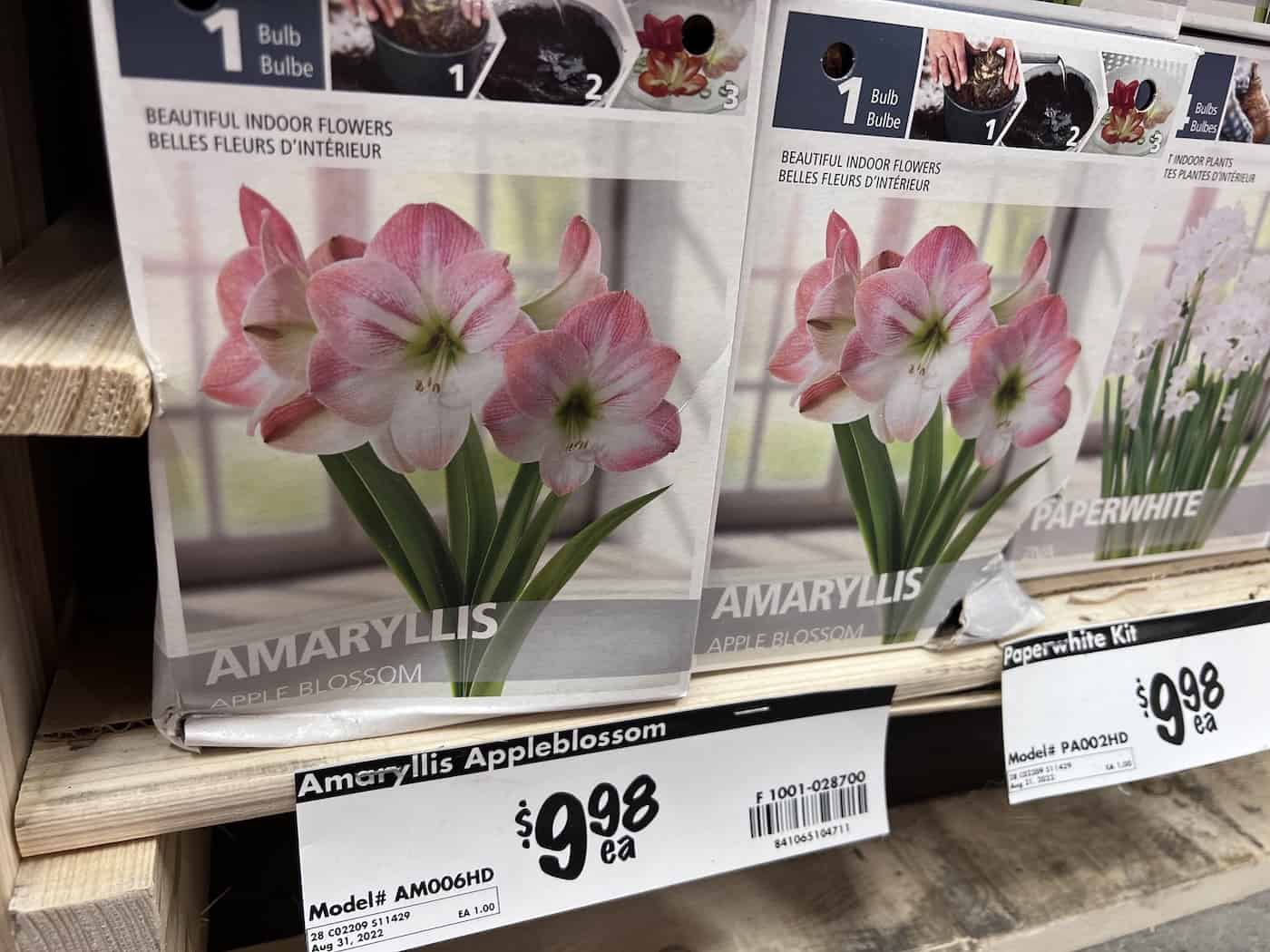
FAQs about Apple Blossom amaryllis
How do you care for an amaryllis ‘Apple Blossom’?
Amaryllis ‘Apple Blossom’ is a beautiful and easy-to-care-for flower. To ensure its health, it should be planted in well-draining soil with plenty of organic matter.
Place the bulb in the soil so that two-thirds of it is covered. Water regularly but do not overwater; let the top inch or two of soil dry out before watering again.
Place the plant in an area that receives bright, indirect sunlight for best results. Fertilize every other month during spring and summer with a balanced fertilizer specifically designed for flowering plants like amaryllis apple blossom. Lastly, remove any dead flowers as soon as possible to encourage new blooms and keep your plant looking its best.
Does amaryllis come back every year?
Yes, amaryllis can come back every year. The bulbs are hardy and can survive through cold winter temperatures if they are properly cared for. When the weather warms up in spring, you should start to see new growth on your amaryllis plants.
To ensure that your amaryllis will return each year, make sure to water it regularly and provide it with plenty of sunlight during the growing season. After flowering has finished, cut off any dead leaves or flowers but leave the foliage so that the bulb can make and store energy for next year’s blooms.
What time of year does amaryllis bloom?
Amaryllis is a popular flowering bulb that blooms in the winter and early spring months. It typically begins to bloom around 6-8 weeks after planting, usually between December and April depending on when and where its planted.
Amaryllis bulbs are easy to grow indoors or outdoors with minimal care required for them to thrive. With proper care, they can be expected to rebloom year after year making them an excellent choice for any gardener looking for a low-maintenance plant with beautiful results.
Is Apple Blossom Amaryllis fragrant?
No, Apple Blossom amaryllis is not fragrant. This particular variety of amaryllis does not produce a scent. However, it is known for its vibrant pink and white flowers that bloom in late winter or early spring. The blooms can last up to six weeks and the plant itself is easy to care for, making it an ideal choice for novice gardeners who want to add some color to their home without needing extensive gardening knowledge.
Before you go…
With the right planting, caring for, and problem-solving techniques, you can enjoy your apple blossom amaryllis all year round. After it blooms, you can either discard the bulb or save it in order to replant it next season. No matter what you decide to do with your apple blossom amaryllis after its bloom cycle has ended, we hope that this article has been helpful in guiding you through the process of bringing one into your home.
Resources
- All about how to fertilize flowering bulbs
- How to plant tulips in a pot
- How to plant paperwhite bulbs
References
- Bulb forcing for beginners and the seriously smitten, by Art Wolk
- Hearst garden guides: Bulbs, by John E. Bryan


